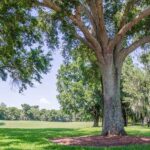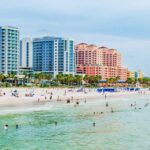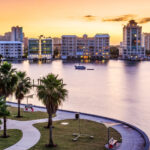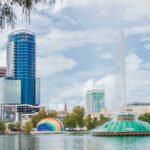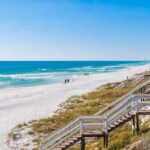Cape Romano Domes Home Intriguing Florida Story
Updated November 2022
It started as a dream. Bob Lee, a retired oil producer, purchased a beautiful piece of Florida paradise in Southwest Florida’s Marco Islands/Naples area to build a revolutionary luxury beach home. From 1980-1982, he built his dome home on Cape Romano Florida. The structure had 6 parts or domes connected to each other measuring 2400 square feet.

While the outside looked like something from a sci-fi movie, the inside was very much a typical home with 3 bedrooms and 3 baths, a living room, kitchen, den and sunroom.

Most impressive was the (ahead of its time) self-sustaining features. Solar panels were used to power the house and heaters that ran through the floors to provide heat on cold nights. The dome roofs ran rainwater into troughs that captured the water that was then filtered into a 55,000 gallon tank under one of the domes. Water shortage was never a problem. (source: Kristian Maples, grand-daughter of the builder).
The dome design served several other purposes. Without corners, the dome created an open space with floor to ceiling windows providing the feeling of more space.
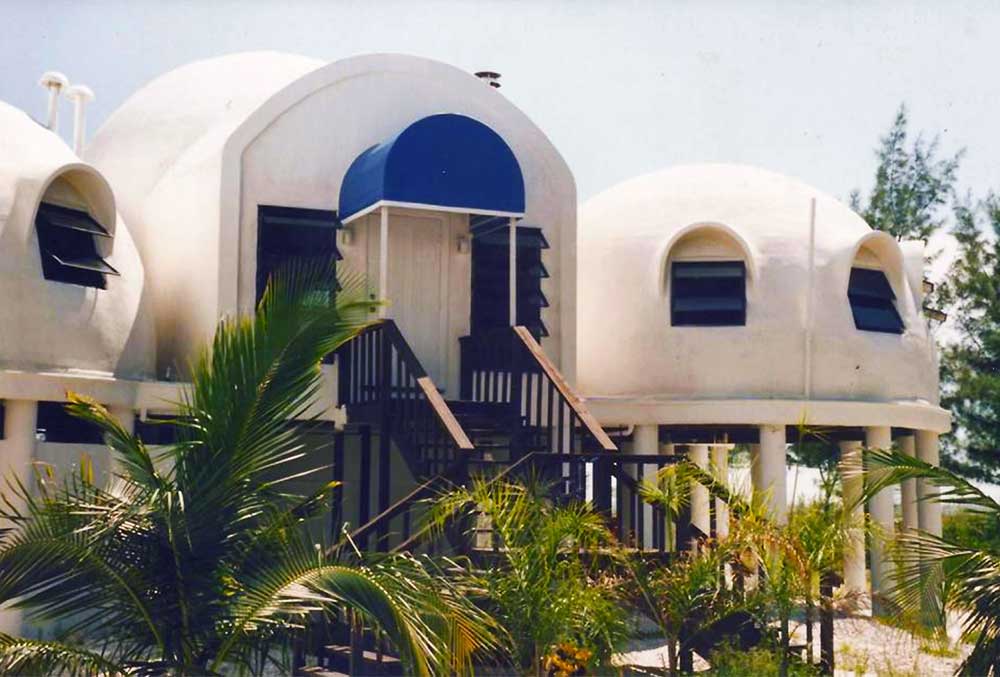
Being built on pillars provided a level of safety from storms and storm surges and also gave the home a beautiful shaded outdoor space.
With the dome design, the home was also more resistant to hurricanes. They withstood 3 Hurricanes since being built, but the beach and sand erosion destabilized the foundation. The first hurricane to affect the domes was Hurricane Andrew in 1992. The dome’s walls and structure withstood, but the windows blew out causing the interior to be destroyed.
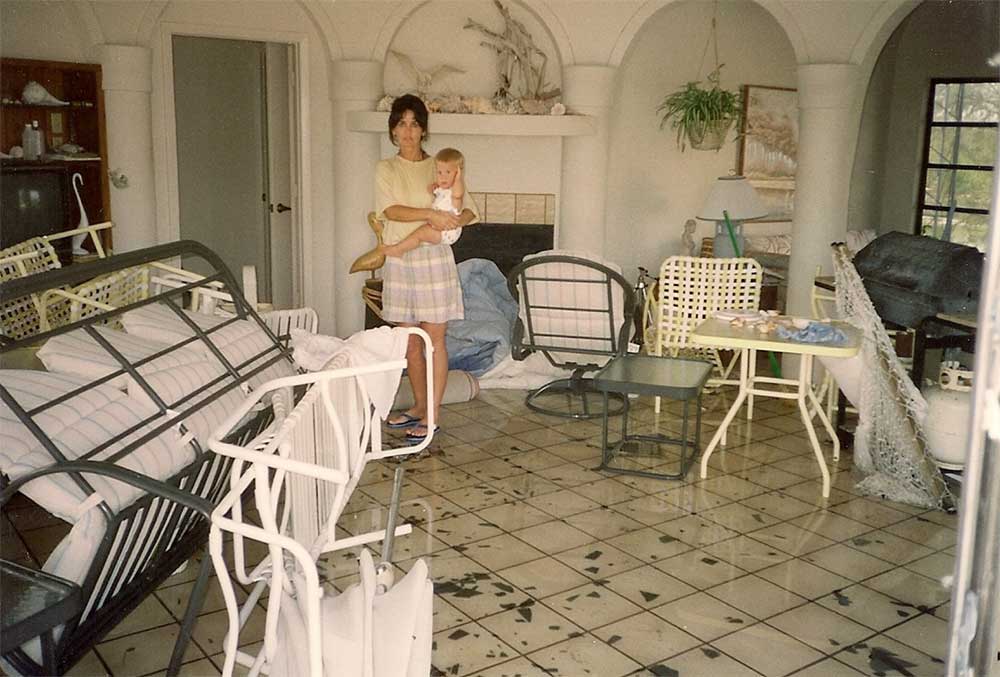
Originally built 20 feet from the water, the storms and beach erosion have been sinking the structures into the sea

Compiled from Satellite images from Google Earth and Dome images from Cape Romano Facebook
By 2004, the domes were at the water’s edge. In 2005, the domes were sold with plans from the new owner to move them inland and renovating the interior. Then Hurricane Wilma came through the area further eroding the beachfront, making the dome’s foundation completely unstable. The owner wanted to save the home by moving it, but the plans were not approved by code enforcement and agencies. In 2007, the owner was given the option to either demolish the house or remove it completely. He has been refusing and growing fines to nearly 1 million dollars from Collier County in the years since for not demolishing the property.
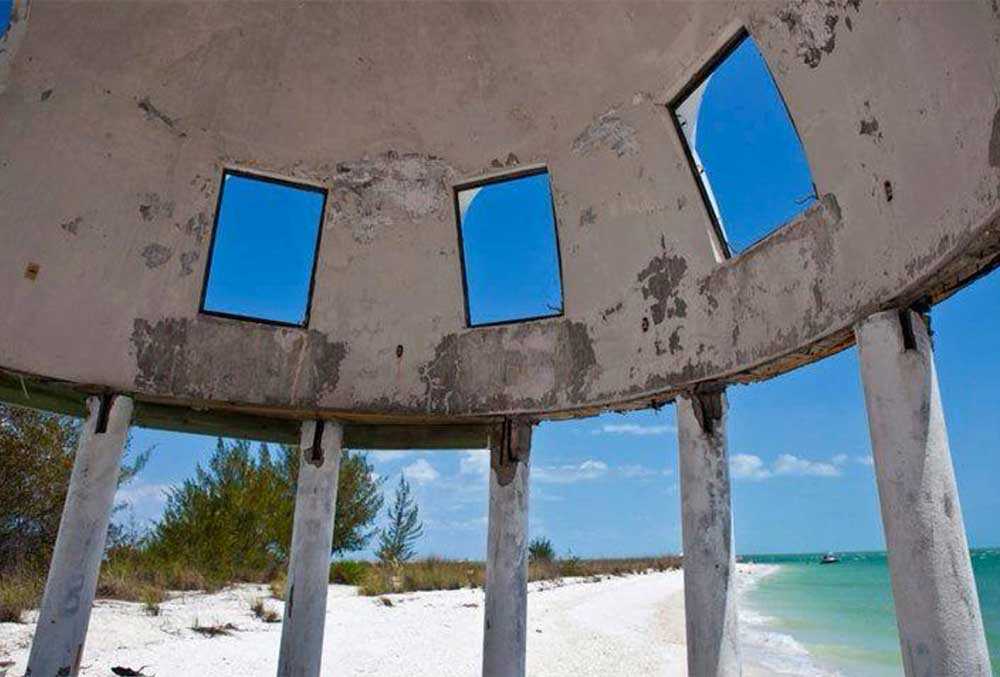
In 2015, a movement was started to move the domes to an underwater location where they could become a reef, but it didn’t get funded. Many didn’t want them touched since they had become a part of the culture. The Domes boosted tourism as this unique structure slowly sinking into the sea is being viewed by some as a historic landmark that people traveled from around the world to see. Local boating captains promoted trips to view these historic domes.
In 2018, the fate of the domes was taken over by the state of Florida. “The submerged lands lying below the mean high-water line of Morgan Pass/Gulf of Mexico, including the subject site, are state-owned and within the Rookery Bay Aquatic Preserve,” according to a letter to the county from the Florida Department of Environmental Protection on May 11. (source: Marco Eagle, June 2018) The biggest concern was the safety issue surrounding the domes. The structures were not stable and the fear was that they could come down at any time. And they did…
The Domes of Florida are now gone
In 2017, all 6 domes were still above water. Then Hurricane Irma hit in 2017 and sank 2 of the domes. Then came Hurricane Ian in 2022, which took the last 4 domes.

The domes in August of 2022 before the Hurricane Ian took them
We were fortunate to be able to see the domes in August of 2022. We chartered with Eco Endeavors in a once in a lifetime excursion.

We got close enough to touch them. As you can see, we were not the only ones as many left their marks. The exterior of the domes were a foam like material. It was really interesting to see them up close and personal.
These historic domes are now underwater and mostly gone. But they will stand forever in history.
Photo Credits: Images courtesy of Cape Romano Facebook Page


